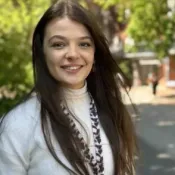Current ClimBEco PhD students
Recruitment to the ClimBEco programme is open during the spring and accepted PhD students begin in August the same year.
Accepted PhD students are enrolled during two years of their PhD studies. There are two groups of PhD students in the ClimBEco programme at any given time. Below is a list of our current ClimBEco groups, group 15 (2025-2027) and group 14 (2024-2026). The PhD students are alphabetically ordered by first name, with a brief description of their PhD research.
Group 15 (2025-2027)

Abigail Starkey

Alexandra Barry

Alice Gredeby

Anna-Kristina Voss

Blandine Lyonnard

Calyne Khamila

Eliza Cwalina

Emily Register

Hampus Holmberg

Jiahui Lin

Lloyd Villanueva

Lovisa Rosenquist Ohlsson

Oskar Åström

Sara Bengtsdotter

Valentina Lomanto

Valentina Wolf

Veronika Widengren

Xiaojing Yang

Zhicong Xie
Group 14 (2024-2026)

Anna Litsmark

Anna Schultze

Astrid Fridell

August Thomasson

Carmen Margiotta

Diana Labastida

Emilia Ganslandt

Erik Holmgren

Haoming Zhong

Julia Qian Mao

Kai Sattler

Leo Håkansson

Lydwin Wagenaar

Michelle Ochsner

Natalia Davila

Sahana Subramanian

Valentina Schüller

Wan-Ni Lin (Annie)

Yuzuo Zhu

Zeynep Ekim Olsson
Participants with extensions

Catalina Quiroga
